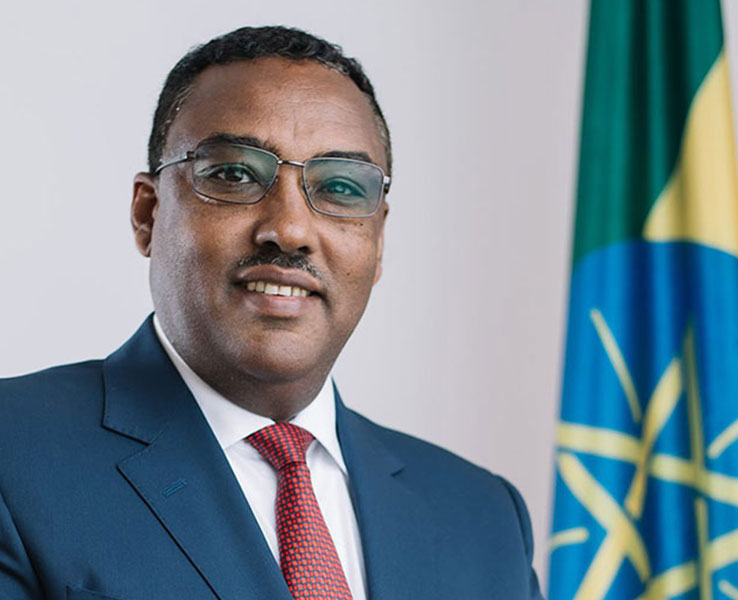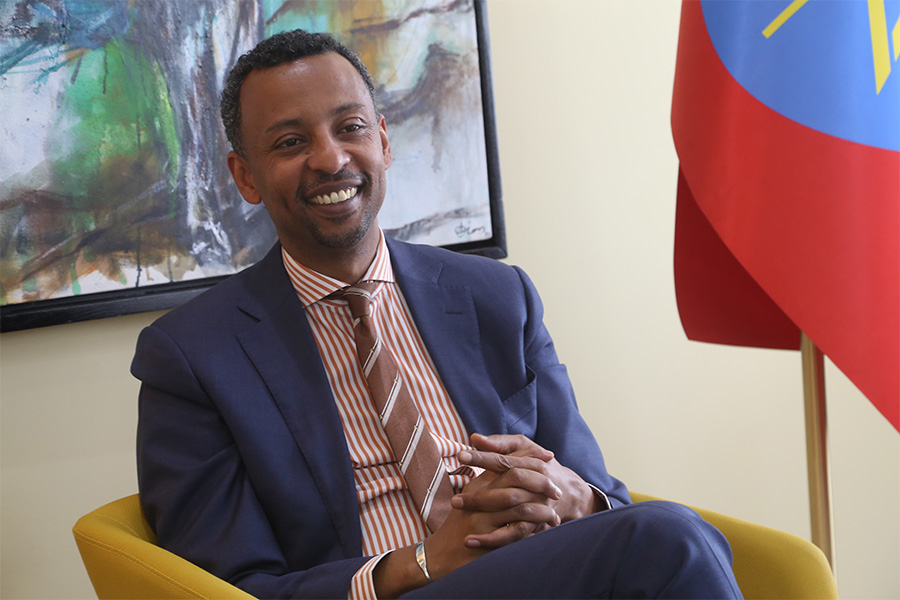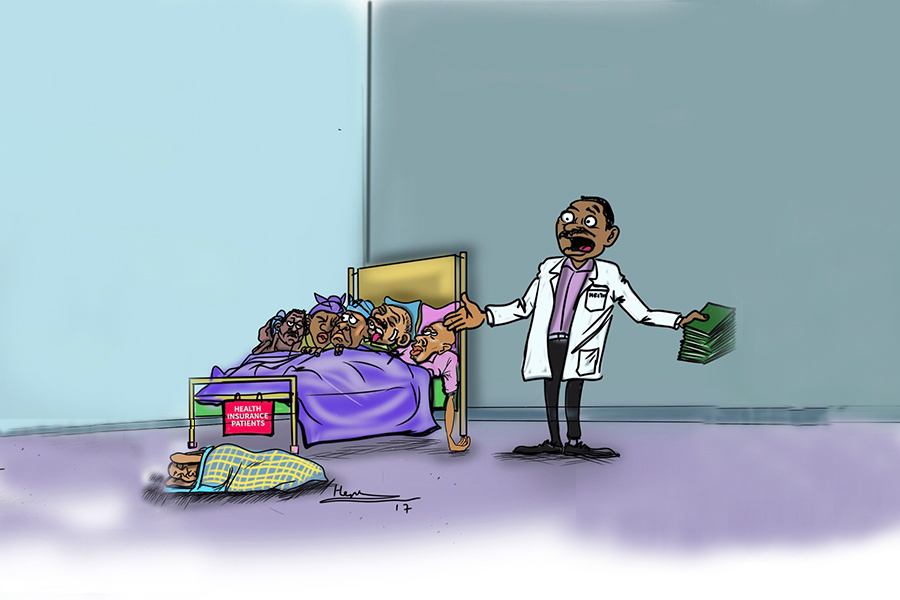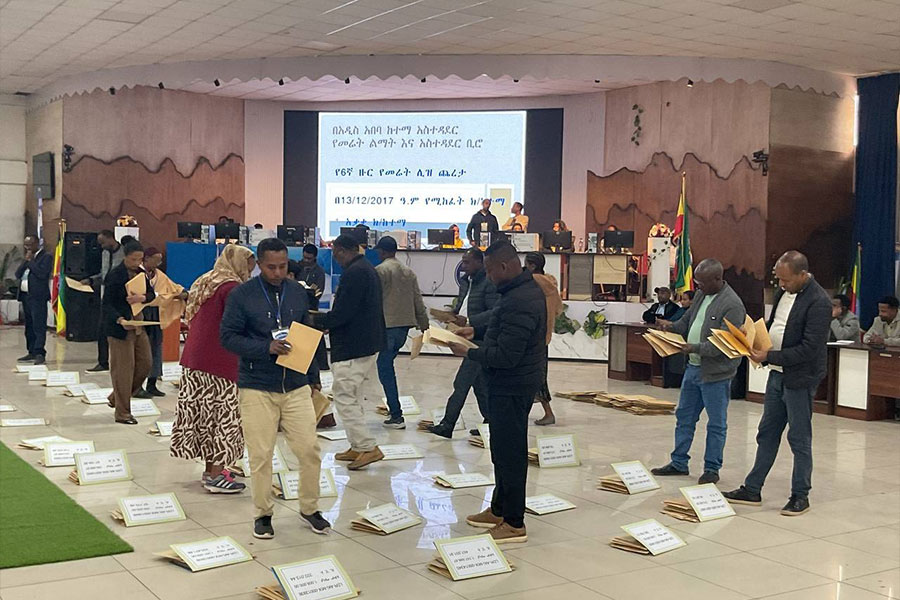
Photo Gallery | 153849 Views | May 06,2019
Mar 2 , 2025
By Bjorn Lomborg (PhD) , Aaron Motsoaledi (PhD)
President Donald Trump's spending freeze on foreign aid marks a major challenge for the international development community, and many experts warn that disease will surge.
During this time of uncertainty about the future role of the world's biggest donor, the Global Fund stands as a beacon of hope. Since the beginning of the millennium, the Geneva-based multilateral organisation has been fighting one of humanity's oldest scourges, infectious disease, and specifically the three big killers: malaria, HIV, and tuberculosis. Through targeted funding and innovative strategies, the Global Fund has made important breakthroughs against malaria and HIV.
Now, the time is ripe to sharpen its focus on tuberculosis.
Nearly one-third of the Global Fund's allocations for 2023 to 2025, amounting to about 4.17 billion dollars, have gone to the fight against malaria. These funds have supported the large-scale distribution of insecticide-treated bed nets and rapid diagnostic tests, drastically reducing transmission rates. Countries like Rwanda and Zambia have seen remarkable declines in malaria cases and deaths.
The Global Fund is spending 6.48 billion dollars on HIV, nearly half its allocation. In the past decade, it has facilitated millions' access to antiretroviral therapy (ART), helping to transform HIV from a fatal disease into a manageable chronic condition. It has empowered individuals to take control of their health by promoting education and prevention, particularly in vulnerable communities.
Together, these efforts have saved countless lives and advanced global health security. But it is now time to reassess.
Tuberculosis prevention and control has been allocated 2.4 billion dollars or 18pc of its budget, and has received less than HIV or malaria every year since the Global Fund was created. But, tuberculosis now kills more people than HIV and malaria together. It is by far the world's leading infectious disease killer. Not only do malaria and HIV receive far more resources from the Fund than tuberculosis, but they also get much more global publicity and media coverage. Tuberculosis, in comparison, is a neglected, forgotten, and often ignored disease.
To understand why, we need to look at the history of tuberculosis.
For people in the rich world today, the disease is little more than a dim memory of a bygone era. But back then, tuberculosis was frightful. In the 1800s, it brought a tsunami of death, killing one-in-four across Europe and the US. For most of the 1800s, New York City's tuberculosis death rate alone was higher than the total death rate in the city today. Across the 1800s, tuberculosis was a much bigger killer than the recent global Covid pandemic managed even in its worst year. Over the past two centuries, tuberculosis has likely killed one billion people.
Yet, almost like magic, tuberculosis has disappeared in the rich world. Antibiotics and a childhood vaccine, combined with better living standards, rudimentary public health measures, and subsequent treatment breakthroughs, mean the disease has been largely eradicated in wealthier countries. But mostly, tuberculosis has lost the attention of the rich world. Not so for the world's poorer half, where tuberculosis still claims nearly 1.3 million lives every year. For comparison, that is greater than the combined death toll of HIV/Aids (630,000) and malaria (619,000).
We have known how to cure tuberculosis for more than half a century. Yet, it persists and kills a record number of people in the poorer part of the world. It mainly kills adults in their prime, leaving children without parents.
Tuberculosis has become an illness of poverty. It spreads when people live in close quarters and are unable to afford space, and it thrives among populations who cannot afford basic healthcare and services. The most vulnerable, living in slums, migrant areas, mining towns and prisons are also the most voiceless. Tuberculosis has gone from risking the lives of all to killing those that nobody cares enough about.
Needless to say, this should not be the case. We know how to defeat the disease, which would take surprisingly few resources. Research by the Copenhagen Consensus think-tank shows that an additional expenditure of 6.2 billion dollars annually could save about a million lives a year over the coming decades, making this one of the best possible development policies. This spending would enable much broader diagnosis to end ongoing infections and ensure most tuberculosis patients stay on medication, reducing deaths by 90pc, by 2030. The benefits, including the reduction in death and disease, outweigh the healthcare and time costs by 46 to one.
The Global Fund is in the middle of its three-year replenishment cycle, and it is asking the world for more resources. The world needs to be generous because the Global Fund has shown that it can achieve tremendous good in the world. The Global Fund, as well as development agencies everywhere, needs to focus more on the illness that is claiming the most lives and where investment can deliver an astonishing return on investment.
PUBLISHED ON
Mar 02, 2025 [ VOL
25 , NO
1296]

Photo Gallery | 153849 Views | May 06,2019

Photo Gallery | 144092 Views | Apr 26,2019

My Opinion | 134844 Views | Aug 14,2021

Photo Gallery | 132284 Views | Oct 06,2021

Dec 22 , 2024 . By TIZITA SHEWAFERAW
Charged with transforming colossal state-owned enterprises into modern and competitiv...

Aug 18 , 2024 . By AKSAH ITALO
Although predictable Yonas Zerihun's job in the ride-hailing service is not immune to...

Jul 28 , 2024 . By TIZITA SHEWAFERAW
Unhabitual, perhaps too many, Samuel Gebreyohannes, 38, used to occasionally enjoy a couple of beers at breakfast. However, he recently swit...

Jul 13 , 2024 . By AKSAH ITALO
Investors who rely on tractors, trucks, and field vehicles for commuting, transporting commodities, and f...

Sep 6 , 2025
The dawn of a new year is more than a simple turning of the calendar. It is a moment...

Aug 30 , 2025
For Germans, Otto von Bismarck is first remembered as the architect of a unified nati...

Aug 23 , 2025
Banks have a new obsession. After decades chasing deposits and, more recently, digita...

Aug 16 , 2025
A decade ago, a case in the United States (US) jolted Wall Street. An ambulance opera...

Sep 7 , 2025 . By NAHOM AYELE
Addis Abeba's sixth public land lease auctions after a five-year pause delivered mixe...

Sep 7 , 2025 . By BEZAWIT HULUAGER
Brook Taye (PhD), the chief executive of the Ethiopian Investment Holdings (EIH), is...

Sep 7 , 2025 . By BEZAWIT HULUAGER
For decades, Shemiz Tera in the Addis Ketema District of Atena tera has been a thrivi...

Sep 7 , 2025 . By NAHOM AYELE
A dream of affordable homeownership has dissolved into a courtroom showdown for hundr...